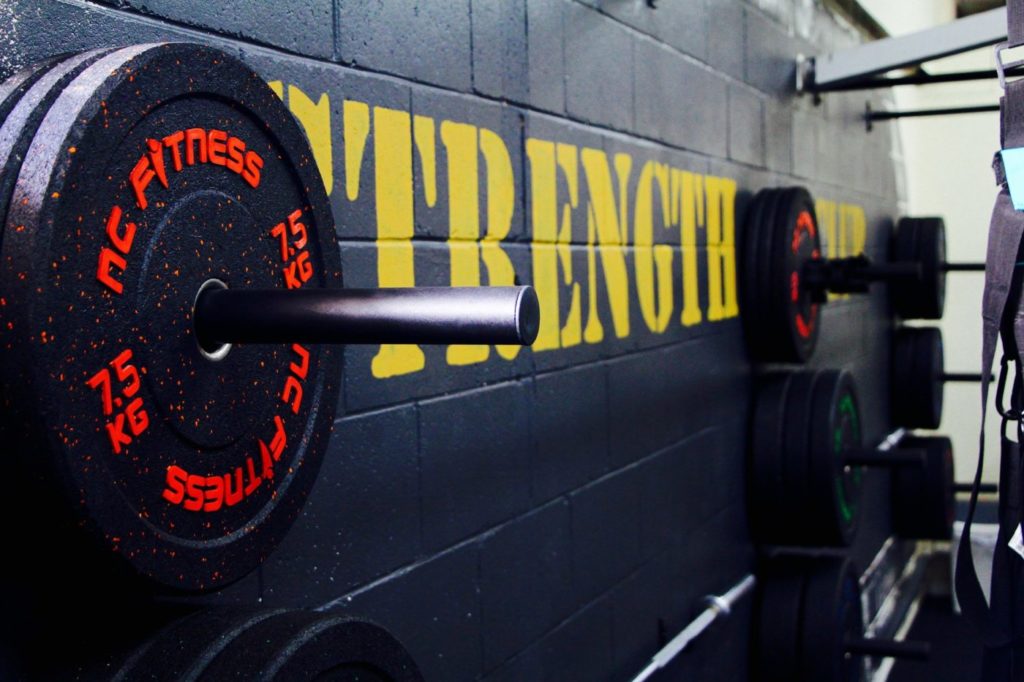Last week we looked at inter-set rest intervals, i.e. the rest required between sets within a rehabilitation or conditioning session. Today we’re going to focus on inter-session rest i.e. the time required between rehabilitation/conditioning sessions to optimise recovery and adaptation.
The preceding contractile history of a muscle or muscle group can modulate its subsequent contractile performance. This effect can actually be positive and result in an increase in performance through a process called potentiation (we’ll look at this another time), or negative and result in a decrease in performance through the broadly termed process of fatigue.
What Is Muscle Fatigue?
“Acute muscle fatigue is defined as the loss in maximal force generating capacity”
Repeated high-intensity muscle contractions or bouts of exercise can cause progressive losses to muscle performance. These can result from maximal isometric contractions, or indeed following match-simulations. For the purpose of this post we’ll focus more on the effects of isolated muscle contractions vs. extended periods of whole body exercise.
In a resistance-training session, your patient will perform multiple sets of several repetitions of very high intensity muscle contractions. If we don’t permit sufficient time for recovery, the muscle / muscle group will fatigue. The underpinning mechanisms are likely to mean that training in a fatigued state will have a negative impact on the potential for adaptation.
We did a study a few years ago now, to investigate the neurophysiologic effects of repeated maximal contractions of the hamstrings. Participants performed 4 bouts of 35s maximal isometric contractions, each separated by 10-15 seconds. Among other things, there was a cumulative loss of muscle strength of up to 16% i.e a progressive increase in muscle fatigue (see figure below).

Recovery From Acute Muscle Fatigue
But, what’s interesting is that strength recovered very quickly. Within 6 minutes! Obviously we’re not the only ones to show this, there’s plenty of high quality literature on muscle fatigue. The point I’m trying to make here is that the effects of acute muscle fatigue are short-lasting. Soooo, it’s unlikely that acute muscle fatigue will influence performance and adaptation in subsequent rehab sessions in the following days.
Hold, on! That can’t be right, can it? Well, if we’re talking about carry-over effects of high-intensity resistance exercise, including muscle soreness into the next day, it is. What patients are most likely to encounter are the effects of Exercise-Induced Muscle Damage, not acute muscle fatigue.
Exercise-Induced Muscle Damage (EIMD)
Skeletal muscle is susceptible to ultrastructural damage following unaccustomed high-intensity eccentric exercise. EIMD is predominantly caused by eccentric muscle activity whereby the muscle lengthens whilst under load, such as downhill running, the lowering phase during resistance exercise, landing from a jump etc.
I’m sure all of you will be familiar with this, as one of the consequences is DOMS – Delayed-Onset Muscle Soreness…that sore feeling you feel a day or two after novel exercise. Ouch!
Other consequences of EIMD, like acute muscle fatigue, include reductions in muscle strength, rate of force development, power and balance. The extent of these impairments can be as much as 15%-70%. So, why isn’t this muscle fatigue? Well, the mechanisms that underpin the performance decrements are different, and as such, these impairments can continue to get worse after the exercise ceases (unlike acute muscle fatigue, whereby recovery is fairly instant). Peak impairments can occur 24-48 hours after exercise. Interesting huh?
Again, just because I have the figure to hand below and here’s the data of hamstrings muscle strength following a muscle damage intervention.

We were pretty mean to the participants here, 6 x 10 maximal eccentric isokinetic contractions! But we can clearly see the maximal impairment occurred 48 hours after the exercise.
Now whilst physiotherapy and rehabilitation interventions are unlikely to be that intense, it is likely that prescribed resistance exercise will present a novel and significant challenge, especially after a period of injury, surgery and/or, disuse. As such the likelihood of your patient experiencing EIMD is very real.
Recovery From Exercise-Induced Muscle Damage
So, how long is enough between sessions to enable recovery? Of course, I’m going to say ‘it depends‘ here, aren’t I? 😉 With very high load, high volume, purely eccentric-focused exercise, recovery of the contractile properties of muscle can take over a week. See in the figure above, hamstrings strength took over a week to recover to within baseline values, and this was the same for rate of force development.
Also, different muscle groups respond differently, for example the hamstrings tend to be more susceptible to EIMD and peak impairments occur around 48 hours (ish) following the inciting exercise, whereas the quadriceps are less susceptible to EIMD following the same dose, and peak impairments occur around 24 hours (ish).
So what do we do? Well, I’d say think about the muscle group that you’re exercising, for example it it’s quads, an inter-session recovery of 2-days is likely to afford an opportunity for some decent recovery with non-experimental interventions! And this could be a little longer for the hamstrings. Also note the patient’s reporting of DOMS, which you can measure on a 0-10 Visual Analogue Scale Whilst it’s not a direct marker of extent of impairment/recovery, it can give you some information, the peak soreness rating can in some circumstances correspond with the peak losses to performance.
Another thought here…and perhaps one for more sports- or performance-based rehabilitation and conditioning applications, with big goals and multiple performance-based parameters. Based on the profile of neuromuscular impairments caused by muscle damage continuing to increase following exercise cessation, there’s definitely the rationale for performing 2 resistance-based sessions within one day versus 2 sessions on consecutive days.
Summary
So Acute Muscle Fatigue and Exercise-Induced Muscle Damage are different phenomena. Whist both cause impairment to muscle contractile performance, they are driven by different mechanisms and follow a very different impairment and recovery profile.
Therefore, between sessions, it is more important to be cognisant of EIMD-related impairments when planning a weekly rehabilitation/conditioning programme.
Eccentric muscle training should form an important component of any rehabilitation programme, since most sporting and daily activities require ‘performance’ under these conditions (e.g. decelerations, direction changes, responding to unexpected perturbations) and the resulting micro trauma and remodelling is important for neuromuscular gains and morphological changes. In the absence of any data at all, it might be wise to give >48 hours recovery (for the same muscle group) between heavy, high-volume resistance sessions for the novel exerciser or deconditioned patient. In more accustomed patients or for relatively ‘lighter’ or less voluminous sessions, <48 hours may well be sufficient.
IT’S HERE! Download your Free 14-page guide: Strength & Conditioning for Therapists
REFERENCES
Chen et al (2011). Comparison in eccentric exercise-induced muscle damage among four limb muscles.


